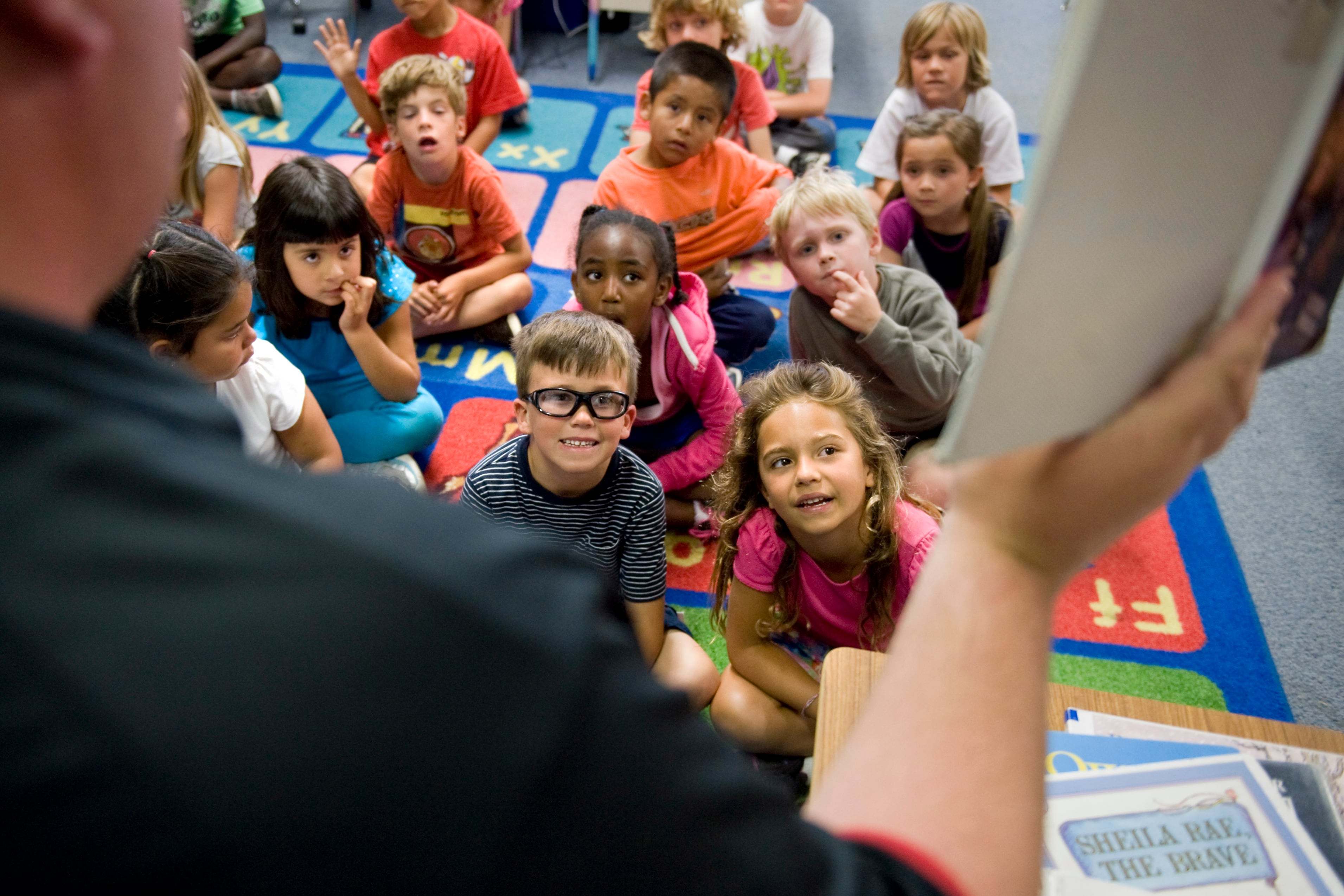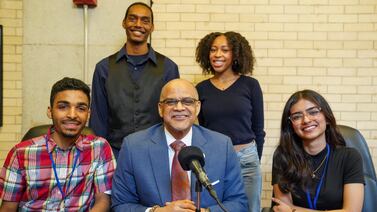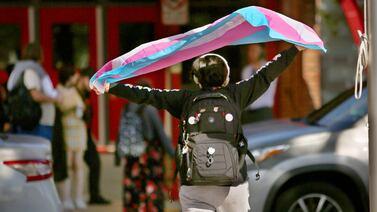One-third of schools in Colorado’s second-largest district use a reading program the state has rejected and researchers have panned for promoting strategies that run counter to science.
Another 20% of schools in the 84,000-student Jeffco district rely exclusively on a district-created core reading curriculum that some educators and school board members say is hard to navigate and has numerous holes.
These problems came to light after Jeffco officials released a school-by-school list of K-3 reading curriculum on Oct. 9, meeting a long-standing request by parents, advocacy groups, and media outlets to make the information public. Previously, district leaders didn’t know what each of Jeffco’s 90 district-run elementary and K-8 schools used to teach children how to read.
The list of reading curriculums illustrates not only the stark differences between Jeffco schools, but also the large number of district schools that are out of compliance with a 2019 state law requiring them to use K-3 reading curriculum backed by science.
That law — an update of Colorado’s landmark 2012 reading law — was borne out of frustration from lawmakers, parents, and advocacy groups that the original law, the READ Act, barely boosted reading scores despite hundreds of millions of dollars spent.
Only about 41% of Colorado third-graders can read well, according to the most recent state test results. In Jeffco, the rate is 46%, but the district ranks lower than the state on another measure that reflects how much students improve from year to year.
The 2019 READ Act update gave the state stronger levers to ensure that teachers receive adequate training on literacy instruction and that schools use scientifically sound reading programs. It also demanded more transparency from districts, requiring them to report to the state what K-3 reading curriculum their schools use. The Colorado Department of Education plans to eventually post that information on its website.
State officials say schools that report using a program the state has reviewed and rejected because it doesn’t align with science must make a good-faith effort to switch — or their districts could face lower accreditation ratings.
Chalkbeat asked Jeffco officials by email Tuesday and Wednesday how and when they’ll transition schools that use unacceptable curriculum to new programs. Reached by phone Thursday, Chief Academic Officer Matt Flores said he didn’t have time to respond that day.
State officials provided few specifics on how or when the education department will enforce the law.
Floyd Cobb, the state education department’s executive director of teaching and learning, said by email the department won’t create “a comprehensive plan for how to support” districts that need to make curriculum changes until after April 15. That’s when all Colorado districts will have to submit school-by-school curriculum lists.
Joyce Rankin, a state board of education member, said she wants schools to make changes “as soon as possible.”
She’s heard concerns from educators and district leaders who say, “Oh with COVID now, you’re piling this on.” She said, “My argument to that is, ‘No, this is what should have been happening in 2012.’”
Experts say a strong core curriculum is a key ingredient for effective reading instruction, but not the only one. Teacher training and coaching are also important, and in their absence, a good curriculum won’t get the job done.
“A curriculum in and of itself is only a piece of the pie in many respects,” said Lynn Kuhn, president of the Rocky Mountain branch of the International Dyslexia Association. “I do believe teacher knowledge is a huge component of effective instruction.”
Here’s what Jeffco schools use to teach reading
Nearly one-third of Jeffco’s 109 elementary and K-8 schools — that includes charters — use one of 10 core English-language reading curriculums the state approved last spring. Core Knowledge Language Arts, Wonders, EL Education, and Open Court are the most common choices. Schools in this category won’t have to switch programs.
Another third of Jeffco schools will have to switch because they use a reading program called Units of Study for Teaching Reading, more commonly called “Lucy Calkins.” It’s been popular for years in Colorado and around the nation, but experts say it doesn’t do a good job teaching phonics and encourages debunked strategies, such as having students guess at words instead of sounding them out.
Colorado curriculum reviewers agreed, awarding the program just 14 of 27 possible points, not enough to move on to the second, more in-depth phase of evaluation last spring. The program’s publisher, Heinemann, appealed the state’s decision and lost.
That means Jeffco and other Colorado districts that use Lucy Calkins, including Denver, Aurora, Cherry Creek, and Mesa County Valley, will have to phase out the program or risk state sanctions.
When Jeffco officials provided the reading curriculum list on Oct. 9 — a deadline they set on Sept. 11 — they omitted nine district-run schools. Chalkbeat requested the missing information that afternoon. A district spokeswoman said Wednesday that district officials were still gathering it and likely wouldn’t have it for several more days.
Using data from school improvement plans or information provided by principals, Chalkbeat retrieved answers for five of the missing schools.
How teachers view Lucy Calkins
Jeffco teachers have a range of opinions about the Lucy Calkins reading program.
Jon Cefkin, a first-grade teacher at Lukas Elementary School in Westminster, said he likes a few things about it, such as the cute posters and graphics, but he finds the lessons wordy and hard to execute. Teachers never got the same kind of in-depth training on Lucy Calkins they’d received on other reading programs earlier in his career, he said.
Cefkin also said some lessons don’t relate to his students or their lives — for example, one about a teacher learning yoga.
“I would not be upset about ditching Lucy,” he said. “It just doesn’t seem applicable to many of our students.”
About 35% of Lukas students are eligible for subsidized meals, a proxy for poverty, and Cefkin said many live in homes with both parents and grandparents.
About 5 miles away at Meiklejohn Elementary, veteran kindergarten teacher Melissa Houlihan has a different take on Lucy Calkins. She said it helped deliver solid reading growth last year, her first year using it. It also weaves in seamlessly with the Lucy Calkins phonics and writing programs she also uses.
“For my kids, it hits them where they need to be,” she said.
Houlihan acknowledged that Meiklejohn’s student population is more affluent than most — just 4% of students are eligible for subsidized meals — and said many students come into her kindergarten class already knowing a lot of skills they’ll need for reading.
She also believes there’s no one-size-fits-all curriculum and that the most important factor is “the teacher and what they’re trained to do.”
“If we had to switch [from Lucy Calkins,] that would be a really large bummer,” Houlihan said. “We spent a ton of money on that.”
She wonders where her school will get the funds to buy a new program, especially with budgets extra tight because of the pandemic.
Jeffco will spend some money on new core reading programs this year, according to a district plan detailing how the district will spend nearly $1.9 million in READ Act funding for struggling readers. About $180,000 — 10% of the money — will go toward the purchase of core curriculum from the state’s approved list.
The rest will pay for tutoring, teacher training, and other reading instruction materials. Reading programs, which usually include teacher manuals and reading and practice materials for students, can cost tens of thousands of dollars per school.
The holes in Jeffco’s district-developed curriculum
About two dozen Jeffco schools rely exclusively on something called “Bridge to Curriculum,” a set of district-created resources. Most other district schools also report using it, though usually in combination with commercial programs.
It’s not clear how state officials will handle schools using Bridge to Curriculum materials because state reviewers only evaluated commercially available reading programs last spring, not district-developed programs.
Regardless of the state’s stance, plenty of Jeffco educators aren’t happy with Bridge to Curriculum, which also houses materials for teaching math, science, and other subjects. At a recent school board meeting, Board member Susan Miller said when a district teacher walked her through the online offerings, they looked “very rich,” but “then we got to resources and it said there are no resources.”
Cefkin, who’s been teaching for 26 years, said he finds Bridge to Curriculum massive and cumbersome, and worries it will discourage beginning teachers who need clear guidance to teach reading.
Brooke Williams, president of the Jeffco teachers union, said the union often hears from teachers who say there are big gaps or broken links in Bridge to Curriculum materials on reading and other subjects. Such problems force them to spend hours plugging holes, a task made more onerous by ballooning COVID-era workloads, she said.
“It always seems to fall on educators’ backs ... to find those resources on their own,” she said. “Why can’t we pick some things that are approved to help our educators out?”
This story was produced with support from the Education Writers Association Reporting Fellowship program.
Look up Jeffco K-3 reading curriculum by school
Search for a Jeffco school below to find out what core reading curriculum it uses in kindergarten through third grade and whether that program has been approved by the state. A core program is a comprehensive instructional program designed to teach all children in a classroom a broad range of reading skills.
Note: Since the original publish date, we received additional information from Jeffco about the curriculum used at five schools. We have updated those entries from “no information provided” to “Bridge to Curriculum.” The schools are: Hackberry Hill, Kendallvue, Maple Grove, Swanson, and Welchester.








